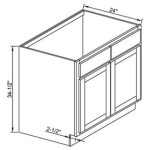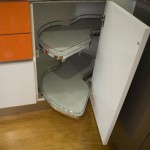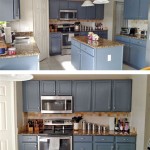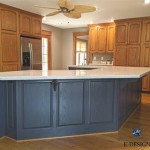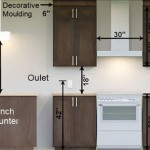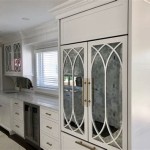Essential Aspects of Installing Upper Kitchen Cabinets
Installing upper kitchen cabinets is a crucial task in completing a kitchen renovation or remodel. Proper installation ensures both the functionality and aesthetic appeal of your kitchen. Here are several essential aspects to consider for a successful installation:
1. Planning and Preparation
Before beginning the installation, thorough planning is essential. Measure the available space accurately and determine the size and arrangement of the cabinets. Create a layout plan that includes cabinet placement, spacing, and hardware selection. Prepare the wall surface by ensuring it is level and smooth to provide a stable base for the cabinets.
2. Cabinet Placement and Leveling
Mark the cabinet locations on the wall and install a ledger board or cleat to support the weight of the cabinets. Position the first cabinet level on the ledger board and secure it using screws. Use a level to ensure the cabinet is perfectly horizontal and plumb. Repeat this process for all remaining cabinets.
3. Cabinet Installation
Lift the cabinets onto the ledger board and align them with the marked locations. Insert screws into the pre-drilled holes to secure the cabinets to the wall. Drive the screws firmly but avoid overtightening. Use spacers to maintain uniform gaps between cabinets.
4. Hardware Installation
Install cabinet doors and drawer fronts by aligning them with the cabinet openings. Adjust the hinges and slides to ensure smooth operation. Mark the locations for hardware and drill pilot holes before installing screws. Use a consistent screw size throughout the installation for a cohesive look.
5. Crown Molding and Toe Kicks
Adding crown molding to the top of the cabinets provides a finished and elegant look. Measure and cut the molding to fit, then secure it using nails or adhesive. Toe kicks cover the gap between the cabinets and the floor, concealing unsightly gaps and preventing dirt accumulation. Install toe kicks by measuring, cutting, and securing them to the bottom of the cabinets.
6. Electrical and Plumbing Considerations
If installing cabinets near electrical outlets or plumbing fixtures, it's crucial to consider accessibility. Ensure there is adequate clearance for cord plugs and pipes. Consult with an electrician or plumber if any modifications or relocations are necessary.
7. Safety Precautions
Always wear safety glasses and gloves during the installation process. Use a sturdy stepladder or scaffold to reach higher cabinets safely. Avoid overloading cabinets, as excessive weight can strain the installation and cause damage.

How To Install Upper Cabinets Like A Pro Cabinetselect Com

How To Install Upper Cabinets A Diy Guide

Here S How Install New Upper Kitchen Cabinets

How To Install Cabinets Like A Pro The Family Handyman

How To Install Kitchen Cabinets Diy Family Handyman

How To Install Wall Cabinets The Home Depot

How To Install Upper Cabinets A Diy Guide

How To Install Upper Kitchen Cabinets By Yourself The Handyman

How To Install Kitchen Wall Cabinets Lowe S

How To Install Upper Cabinets Like A Pro Cabinetselect Com
Related Posts

